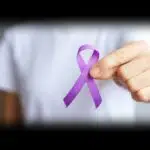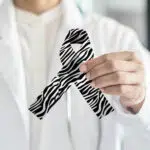We observe National Sexually Transmitted Infections (STIs) Education and Awareness Month every April. The purpose is to reduce the stigma associated with STIs and raise awareness to help mitigate the increase in STI rates in the U.S. According to the Centers for Disease Control and Prevention (CDC), there were almost two million cases of syphilis, gonorrhea, and chlamydia reported in the U.S. between 2013 and 2017. During this month, health organizations and relevant authorities join forces to educate the public about sexually transmitted infections (STIs) and the procedures that may be taken to prevent or contain infections to fast reduce the alarmingly high infection rate.
History of National Sexually Transmitted Infections (STIs) Education and Awareness Month
It was during the Italian War of 1494 — 1498 that a sickness, now known as ‘syphilis,’ spread among French troops. Over five million people died as a result of the first known lethal sickness. It wasn’t until the sixteenth century that the term “Gonorrhea” was coined, and its origins can be traced back to a prostitute-infested area of Paris called “Le Clapiers.”
The first volunteer hospital for venereal illnesses was established in 1746 at the London Lock Hospital, but no serious pharmacological therapies for STDs existed until then. The ‘Brussels Agreement’ was signed in 1924 by several countries, which pledged to provide free or low-cost medical care at ports for merchant seamen with venereal diseases.
‘Salvarsan,’ a medication for syphilis, was the first effective treatment for sexually transmitted diseases. In the 1960s and 1970s, public health campaigns against STIs and the discovery of antibiotics led to a popular view that STIs were no longer a concern to public health, and this was largely due to the widespread availability of antibiotics. Around 1969, HIV/Aids made its way to the U.S. Sexually transmitted diseases that could not be healed by modern medicine first came to public attention in the 1980s with the appearance of genital herpes and then Aids. When it became clear that Aids was on the verge of becoming a global epidemic, public awareness efforts were launched, and medicines were developed to keep HIV replication at bay for as long as possible.
Contact tracing was also acknowledged as an important part of the treatment of STIs. Health organizations and STI clinics were able to effectively control infections in the general population by tracking the sexual partners of affected individuals, testing them for infection, treating the infected, and monitoring their contacts.
National Sexually Transmitted Infections (STIs) Education and Awareness Month timeline
An infectious disease breaks out among French troops during the Italian War.
The London Lock Hospital begins to treat victims of these infectious diseases.
Effective treatment for syphilis is successfully developed.
Aids begins to spread across Europe.
National Sexually Transmitted Infections (STIs) Education and Awareness Month FAQs
Can STIs be cured?
STIs happen a lot, and all of them can be treated. Many can be cured completely. Even STIs that can’t be cured can be treated with medicine to ease the symptoms.
Can STIs be transmitted by kissing?
Even though kissing is low-risk compared to oral sex and intercourse, CMV, herpes, and syphilis can be spread through kissing. Herpes and syphilis can be spread through skin-to-skin contact, especially when sores are present.
Can you live a normal life with STIs?
Even if you have an STI, you can still lead a normal life so long as you ensure to receive the right medical care.
How to Observe National Sexually Transmitted Infections (STIs) Education and Awareness Month
Create awareness
Share information about STIs on social media. Create educational posts about the risks and join campaigns aimed at educating people on the need to practice safe sex.
Discuss STIs with family and friends
Talk to your friends and family about STIs and share useful tips on how to stay protected. Infections can easily spread within the home, which is why everyone needs to take equal measures to stay protected.
Get tested for STIs
Once an individual is sexually active, there’s always a risk of being exposed to an STI. This is why regular checks are necessary and important.
5 Important Facts About STIs
Condoms don’t provide total protection
Condoms don't protect against genital herpes, which is the most common STI.
The infection rate is very high
According to the World Health Organization, there are one million STIs acquired on a daily basis.
Some STIs have very mild symptoms
Some STIs, like chlamydia and gonorrhea, don't have any symptoms, but they can still make it hard to get pregnant.
There are about 25 known STIs
There are more than 25 diseases that can be spread sexually.
Some STIs are easier to treat
STIs caused by bacteria are usually easier to treat, but viral infections can be managed but not always cured.
Why National Sexually Transmitted Infections (STIs) Education and Awareness Month is Important
It creates more public awareness
Different campaigns are held to educate people about the consequences of untreated STIs. It’s a great opportunity to increase awareness.
It reduces stigma
It helps to break the stigma around STIs and allows people to talk more openly about them. Support groups and health foundations create forums dedicated to helping victims and answering questions from the public.
There’s a ton of useful information
This month promotes safe sex practices and provides information about how to get tested for STIs. Social media and technology also make it easy to share information globally and sensitize even more people.
National Sexually Transmitted Infections (STIs) Education and Awareness Month dates
| Year | Date | Day |
|---|---|---|
| 2026 | April 1 | Wednesday |
| 2027 | April 1 | Thursday |
| 2028 | April 1 | Saturday |
| 2029 | April 1 | Sunday |
| 2030 | April 1 | Monday |



















































































































































